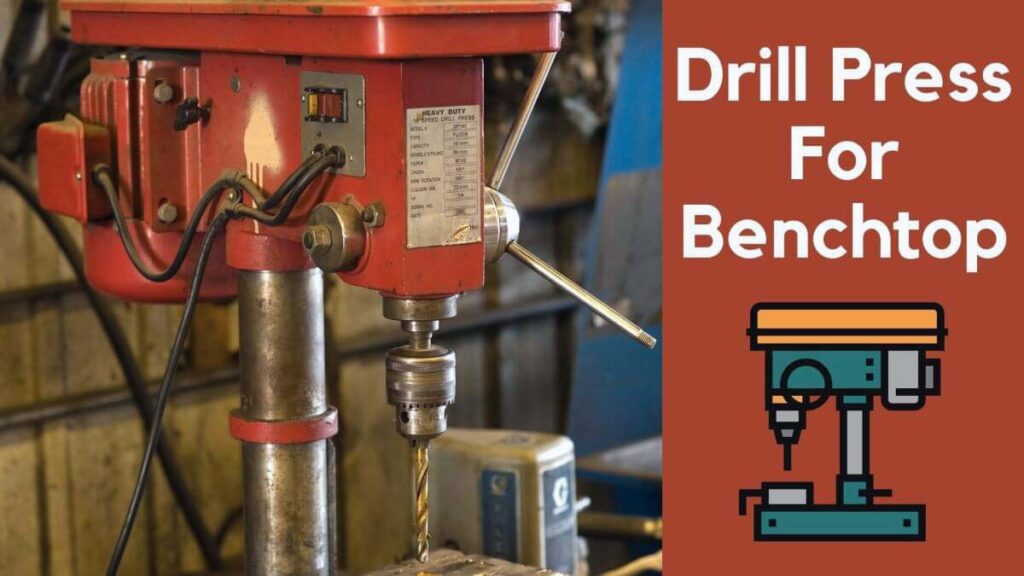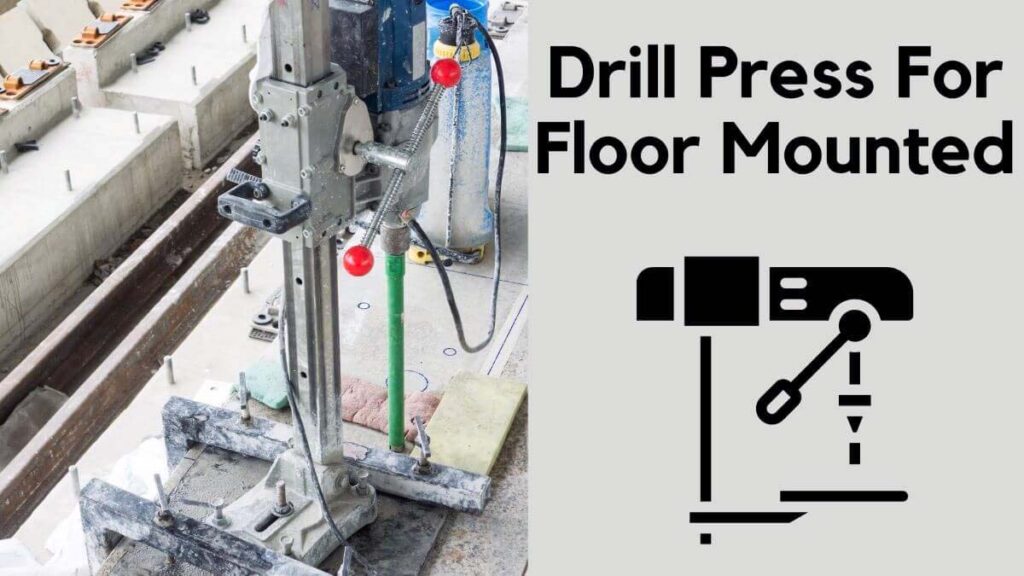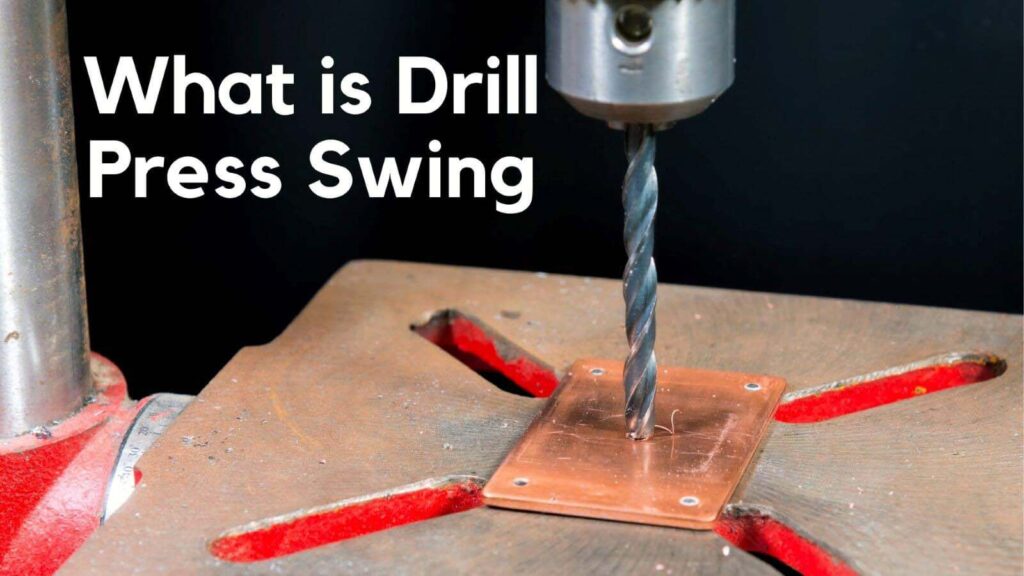A drill press is one of the most essential tools in any workshop, whether you’re a professional craftsman or a hobbyist. One term that often comes up when discussing drill presses is “drill press swing.” However, many may not fully understand what this term refers to or its importance.
In this post, I will dive deep into the concept of drill press swing, how it impacts the machine’s functionality, and why it matters in your drilling operations.
Table of Contents
The Definition of a Drill Press Swing
Drill press swing is a measurement that represents the maximum diameter of a circular workpiece that can be drilled in the center. It is calculated by doubling the distance from the center of the spindle (where the drill bit is held) to the column of the drill press. Essentially, the swing gives you an idea of the largest piece of material the machine can handle for centered drilling.
For instance, if the distance from the spindle to the column is 6 inches, the swing would be 12 inches. That means you could drill the center of a piece of material that has a 12-inch diameter. The swing measurement is critical because it sets the maximum workpiece size that your drill press can accommodate.
How a Drill Press Runs?
Before diving into the specifics of the swing, it’s essential to understand how a drill press operates. A drill press is a stationary machine that uses a vertically mounted spindle to rotate a drill bit. The machine allows for precise control over the drilling process, offering adjustable speed settings, depth control, and the ability to handle a variety of materials such as wood, metal, and plastic.
The drill press runs on a motor that drives the spindle to spin at different speeds, depending on the task at hand. Unlike handheld drills, a drill press is mounted (either on a bench or the floor), making it much more stable and precise. The operator can raise or lower the spindle by using a lever, controlling the depth of the hole being drilled. This setup allows for cleaner and more accurate holes than handheld drills can usually provide.
Read More: How to Sharpen a Drill Bit with a File
Drill Press Swing Type
Drill presses are classified into two types: Benchtop and Floor Mount
The type of drill press you choose can affect its swing, size, and functionality. The two main types of drill presses are:
1.Drill Press for Benchtop

Benchtop drill presses are smaller and designed to sit on top of a workbench. These are ideal for hobbyists and those working on smaller projects or who have limited workspace. A benchtop drill press typically has a smaller swing, which means it’s better suited for smaller workpieces.
Benchtop models are generally more affordable and easier to move around, making them a popular choice for DIY enthusiasts or those who don’t need the power and size of a full-sized floor model. However, because of their smaller swing, they cannot handle large pieces of material.
2.Drill Press for Floor Mounted

Floor-mounted drill presses are larger, more powerful, and have a significantly larger swing compared to benchtop models. These machines are meant for professional use or for serious woodworking and metalworking projects that require the ability to drill large, thick materials.
With floor-mounted drill presses, you can work on larger projects due to the greater swing, depth, and power capacity. These models are more stable due to their weight and size, allowing for even more precise and powerful drilling operations.
Drill Press Swing Size
Swing size is one of the key factors to consider when choosing a drill press. As mentioned earlier, swing size refers to the maximum diameter of a workpiece you can drill a hole in. The bigger the swing, the larger the workpiece you can handle.
Benchtop drill presses typically have a swing size ranging from 8 to 12 inches, while floor-mounted models can go as high as 20 inches or more. The swing size also correlates with the overall size and power of the machine. Larger swing sizes allow for drilling the center of larger workpieces, making it essential for users who need to work on large projects, such as metal fabrication or cabinetry.
Read More: How to Measure Drill Press Size
Drill Press Swing Power
The power of a drill press is another important consideration. More power means the drill press can handle tougher materials and drill larger holes with greater ease. Power in drill presses is typically measured in horsepower (HP) or watts. Most benchtop models offer between 1/4 to 3/4 HP, while larger, floor-mounted models can offer 1 to 2 HP or more.
A powerful drill press can drill into thick and dense materials like steel and hardwood with ease, whereas a less powerful machine may struggle. If you’re planning to work on demanding projects, the drill press swing alone is not enough—power plays a significant role in the overall performance.
Read More: How To Drill Aluminum
Drill Press Swing Speed
Drill press speed is measured in revolutions per minute (RPM). Most modern drill presses come with variable speed settings, allowing you to adjust the spindle’s speed depending on the material you’re working with. For example, wood typically requires higher speeds, while metal drilling is done at lower speeds to avoid overheating and wear on the drill bit.
Having control over the speed is essential when you’re working on different materials. A drill press with variable speed control allows you to optimize performance and get the best results.
Read More : How to Remove a Stuck Drill Bit from Wood?
Explanation of Drill Press Swing And Drilling Capacity
Drill press swing directly impacts the machine’s drilling capacity. While swing refers to the maximum size of the workpiece, drilling capacity indicates the maximum depth you can drill. The throat depth (the distance between the spindle and the column) is half of the swing, and it determines how far into the material you can drill without hitting the drill press column.
For instance, if your drill press has a swing of 16 inches, it has a throat depth of 8 inches, meaning you can drill a hole up to 8 inches away from the edge of the material.
Why is it Essential?
The drill press swing is essential because it determines the size of the material you can work with. If you frequently work on larger projects, you need a drill press with a large swing to accommodate the size of your workpieces. It ensures that you can drill holes in the center of your material without constantly repositioning it, which would be inefficient and imprecise.
How Many Swing Sizes Do You Require?
The swing size you require depends on the type of projects you typically work on. If you work with smaller materials, a drill press with a swing of 8 to 12 inches is usually sufficient. However, if your projects involve larger pieces, like large furniture or metalwork, you’ll need a machine with a swing of at least 16 inches or more.
Read More: How to Drill a Hole in Plastic Without a Drill?
Why is a Large Drill Press Swing Better?
A larger drill press swing is advantageous because it allows you to work on larger projects and drill holes in the center of wide materials. It offers more flexibility and can handle a broader range of tasks. However, larger swing sizes typically come with larger, heavier, and more expensive machines, so you need to balance your needs with your budget and available space.
FAQ’s
Is drill press swing the same as throat depth?
No, drill press swing and throat depth are not the same. Swing is the distance between the spindle and the column doubled, while throat depth is the distance between the spindle and the column itself, which is half of the swing measurement.
Can I work on smaller projects with a large swing drill press?
Yes, you can work on smaller projects with a large swing drill press. However, a smaller machine may be more practical and easier to handle for these tasks.
Can I modify the swing measurement of a drill press?
No, the swing of a drill press is a fixed measurement based on the machine’s design and cannot be modified.
Is swing the only factor to consider when buying a drill press?
No, while swing is an important factor, you should also consider power, speed control, build quality, and overall stability when choosing a drill press.
Is it advisable to always opt for the largest swing available?
Not necessarily. While a larger swing offers more flexibility for larger projects, it also comes with added cost, space requirements, and weight. Choose a swing size that fits your specific needs.
Final Thought
The drill press swing is a fundamental aspect of understanding the machine’s capacity and limitations. By knowing the swing measurement, you can determine the maximum size of the workpiece you can handle.
However, it’s important to consider other factors like power, speed, and stability alongside the swing measurement to find the right drill press for your workshop. Whether you’re working on small or large projects, understanding drill press swing helps you choose the right tool for the job.

Hey, I am MD Hrithik Hossain, I’m a huge fan of DIY crafts. My workshop is where I spend most of my spare time, and I’m always working on some project. To that end, I’d like to share some of my knowledge and experience with you in power tools, woodworking, and other specialized materials fabrication.
I will guide you with genuine knowledge that can assist you with deciding whether a drill is appropriate according to your requirements or not. If you want to find the best drill and know which type of drill is most suited for your needs, then I can guide you with my expertise. My passion lies in helping others find the correct products they need at an affordable price.


